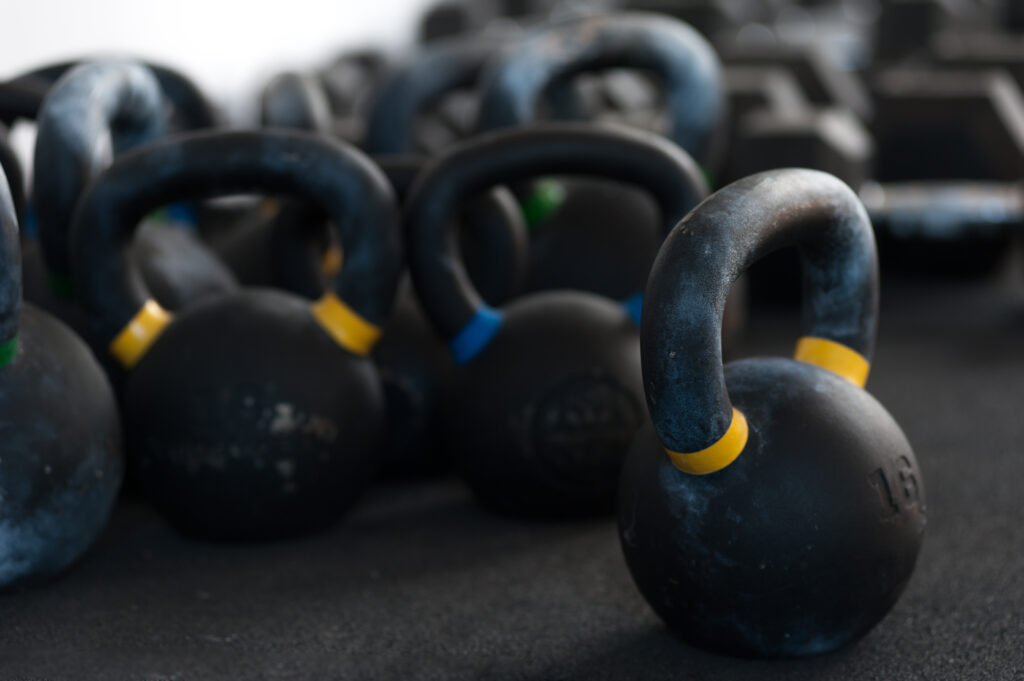
Alas, I will never be a fitness influencer.
First of all, the mere thought of even calling myself something like that invokes an immediate gag reflex. But more to the point I am not nearly creative enough to fall into that camp.
I mean, a true fitness influencer would have used any of the following titles to lure you in:
“187 Goblet Squat Variations That I Made Up on a Wednesday”
“The Keto Guide to Goblet Squats”
“4 Maybe New to You Goblet Squat Variations (You Can Perform With a Chainsaw)”
See?
I’m too boring to be an influencer.
4 (Maybe New to You) Goblet Squat Variations
All that said, I’m a firm believer that training doesn’t always have to be a circus show. Sure, it behooves us to add a little variety and pizzazz into the mix – I.e., chainsaws? blindfolds? unstable surface? chains? a black bear? – but for most people, most of the time, what yields the best results are sticking with exercises that:
- Are user friendly and easily reproducible.
- Don’t require a bevy of speciality equipment and/or signing a liability waiver to perform.
- Provide carryover other than garnering “likes” on social media.
I don’t know, maybe it’s because I’m a bit old school and am kinda-sorta set in my ways, but for me and my money, the best exercises are the ones that are monotonously boring.
To that end, since we’re all sequestered and training at home and likely doing all we can to NOT toss our faces into a brick wall from too much monotony, below are a handful of Goblet Squat variations – that, for the record, can be performed with either a kettlebell or dumbbell – I tend to default to with my own programming (and that of my clients/athletes).
1. Goblet Squat w/ Lowering
Let’s be honest: It’s a bicep curl. The “lowering” part is a bicep curl.
However, WHY I like adding in the bicep curl may surprise you.
It’s not for bigger arms.1
Rather, I like how it forces you to OWN the bottom position of the squat. I find a lot of trainees tend to “relax” in the hole and either end up losing their spine position or just “hang out” on their passive restraints (ligaments and tendons). With the lowering component the idea is that they have to remain ON throughout the motion.
There’s a bit more of a mind-body connection which I find is beneficial for many.
SIDE NOTE: As you can see, my 3-year old in the background is super impressed.
2. Goblet Squat w/ Pulse
I got this one from Dan John years ago and it’s a sneaky little fucker.
The limiting factor, of course. will be shoulder endurance so err on the side of conservative when selecting a load to use.
That said, the main benefit of this variation is targeting the anterior core. Similar to above, the idea is to OWN the hole and pressing the KB out in front of the body forces you to fire your core to a very high degree.
It also forces a bit of weight shift (back), which allows for a bit of “settling” into the squat to occur. Be PURPOSEFUL with pulse part; it shouldn’t be a quick jolt back and forth.
3. Squat w/ Overhead Press
I’m just going to come right out and say it: This one suuuuuuuuuuuucks.
I picked this one up from Dr. Quinn Henoch of Clinical Athlete a few years ago when listening to him present, and was slapped in the face with intrigue when he mentioned he liked this variation to help with grooving thoracic extension with his athletes.
Once I tried it the lightbulb went off.
Try it.
You’ll get it too.
4. Goblet Kickstand Squat
Also known as a “B-Stance” Squat, all we’re accomplishing here is getting more acquainted with asymmetry and using it to our advantage. I’ve written more on my stance with regards to asymmetry in the past and you can check it out HERE.
TLDR: Asymmetry is normal. You’re going to live.
I like this variation because:
- Everyone is a bit different – anthropometically speaking – and for many, experimenting with asymmetrical stances is a splendid way to help make the squat feel more comfortable.
- I also view this as “fake single leg training” in that we can overload one limb over the other while not taking balance out of the equation (which can be a limiting factor for some).
- Just because.
I’m awful at conclusions.



